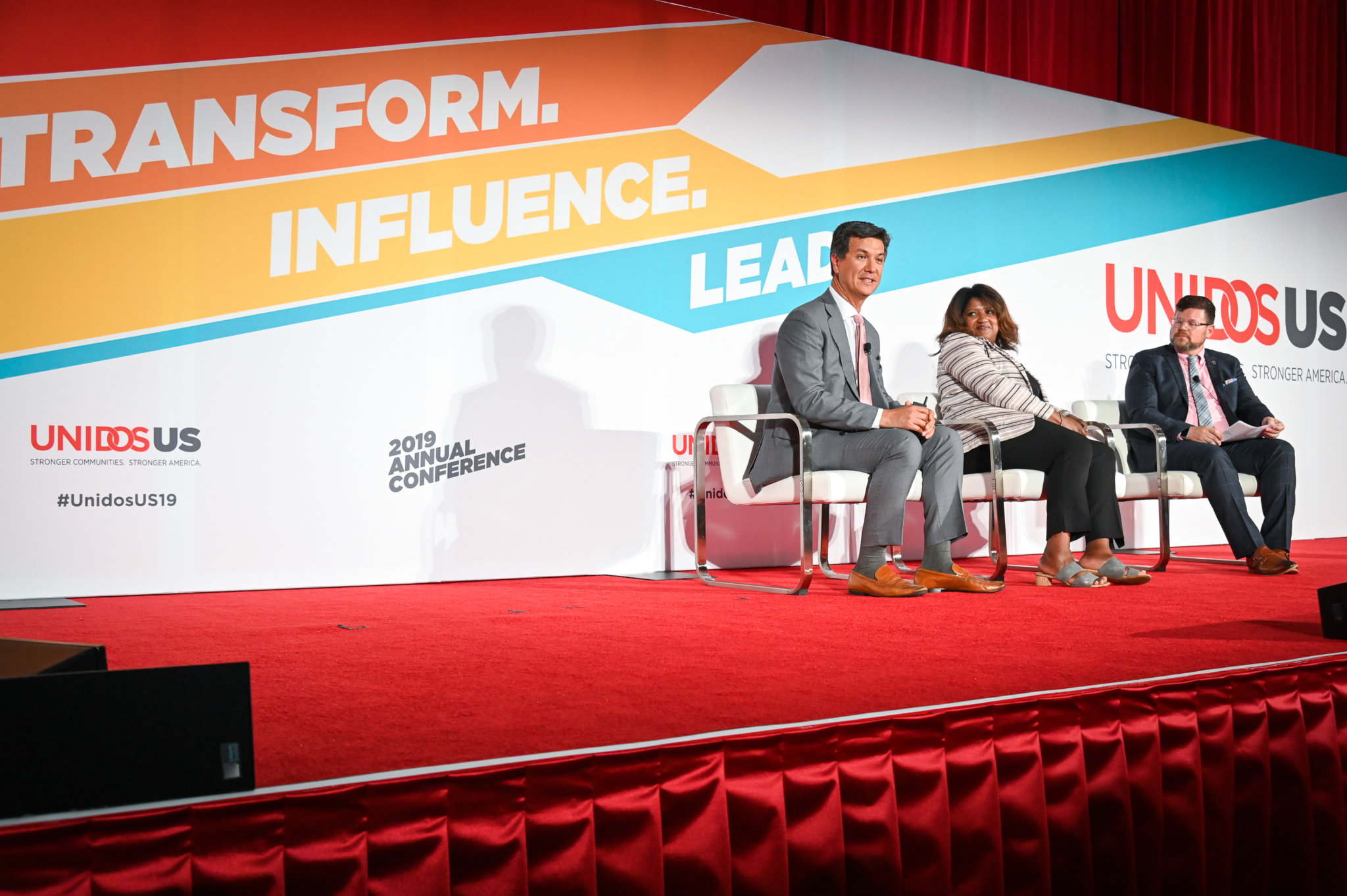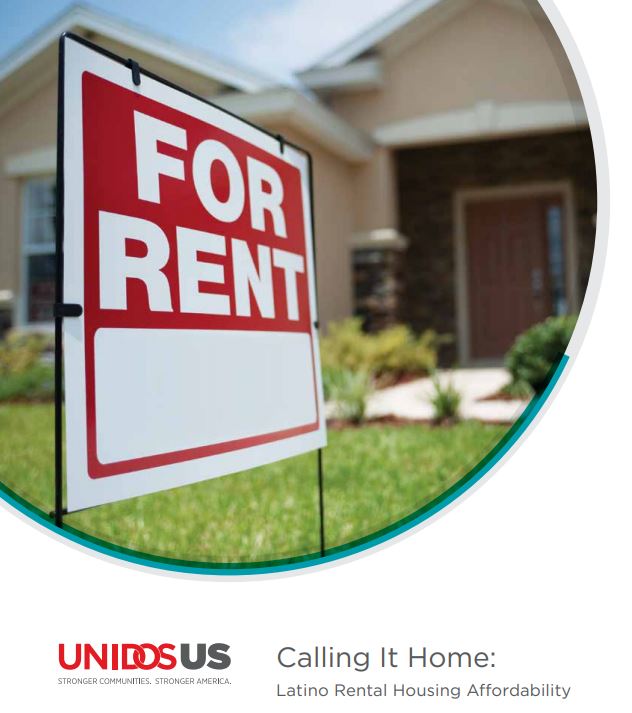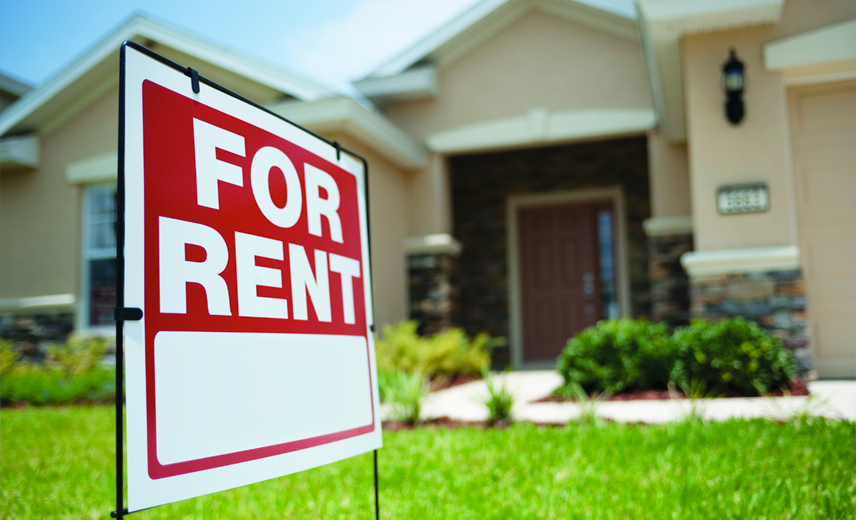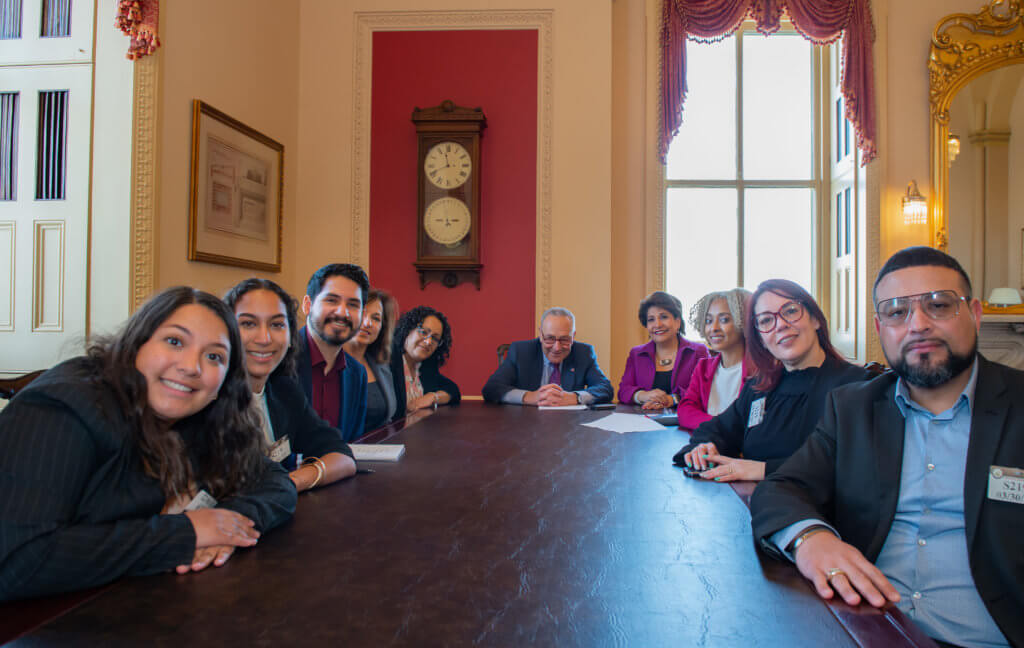Is the American Dream of homeownership still achievable for Latinos?
Affordable housing is set to be a key issue in advance of the 2020 presidential election. A panel of experts at the 2019 UnidosUS Annual Conference discussed prospects for expanded access to housing.
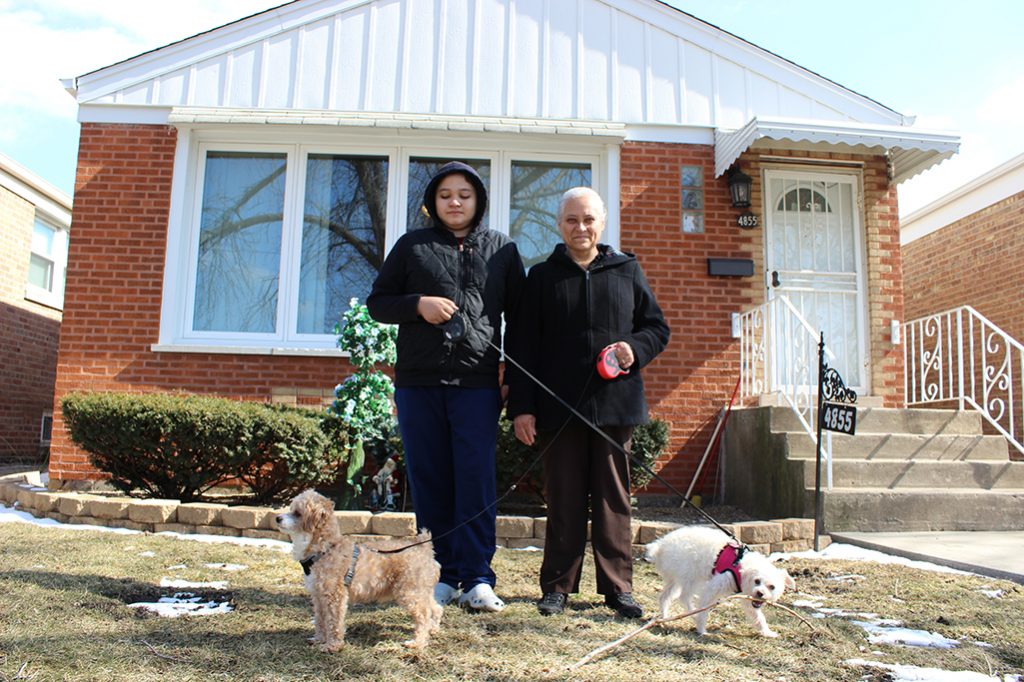
By Stephanie Presch, Content Specialist, UnidosUS
Keep up with the latest from UnidosUS
Sign up for the weekly UnidosUS Action Network newsletter delivered every Thursday.
In a two-part panel at the 2019 UnidosUS Annual Conference in San Diego in August, we examined the issue of affordable housing from different perspectives. The first panel focused on homeownership, and the second one centered on access to affordable rental homes, which we will cover in a future post.
“One of the major challenges that Latinx consumers face is that our nation was built on a system of racism and apartheid,” said Lisa Rice, President and CEO of the National Fair Housing Alliance.
Rice explained that segregation and a state-sponsored system of apartheid contributed to the disparities in wealth and housing that we see today in the United States.
“In the late 1960s, we decided that we no longer wanted to be an apartheid nation and we passed a bevy of civil rights laws to stop the discrimination that we were perpetuating in our marketplaces,” Rice said.
The 1960s saw groundbreaking legislation like the Voting Rights Act and the Fair Housing Act that were intended to address and prevent discrimination in multiple issues in American life. In fact, the Fair Housing Act was passed only a week after Martin Luther King, Jr. was assassinated, further demonstrating the connection between the legislation and the broader push for civil rights.
Fight for civil rights
However, just because the laws were passed, did not mean that these inequities had been completely addressed. “What we did not do is pass laws that would compensate, accommodate, or remedy the centuries-long discrimination that we had been perpetuating in our marketplace,” Rice added.
One of the ways that these inequalities have become entrenched is through what Rice called a “dual credit market.” There is a high-cost market that predominantly serves consumers of color, and a low-cost market that overwhelmingly serves White consumers.
“Trying to make entry into that low-cost market is next to impossible,” Rice lamented.
A recent analysis by the S&P showed that bank branches in affluent communities of color are being closed at a higher rate than bank branches in low-income White neighborhoods.
“It’s not an issue of economics; it’s an issue of race. It’s a legacy of this system,” Rice explained, and one of the reasons that can explain why 52.8% of Latinos are renters.
What can advocates do?
Another problem that Rice highlighted is the disparity in the credit market. The dual-credit market is not only separated by cost; it’s also separated by reporting methods. As Rice detailed, creditors in the high-cost market do not report positive, on-time payments, but do consistently report missed or late payments. As a result, this makes it more difficult for people who are in the high-cost market to build their credit.
“If we want to dismantle this discriminatory system that we have, we can do it—we just have to be deliberate. We have to be as deliberate about creating fair and equal and equitable opportunities as we were deliberate about creating segregation and discrimination,” Rice urged the audience.
To carry out this deliberate approach, Rice presented two tools that could be utilized by advocates through the Fair Housing Act. The first is a doctrine called “intentional discrimination,” which Rice defined as “employing policies and practices with the express intent to deliberately discriminate.”
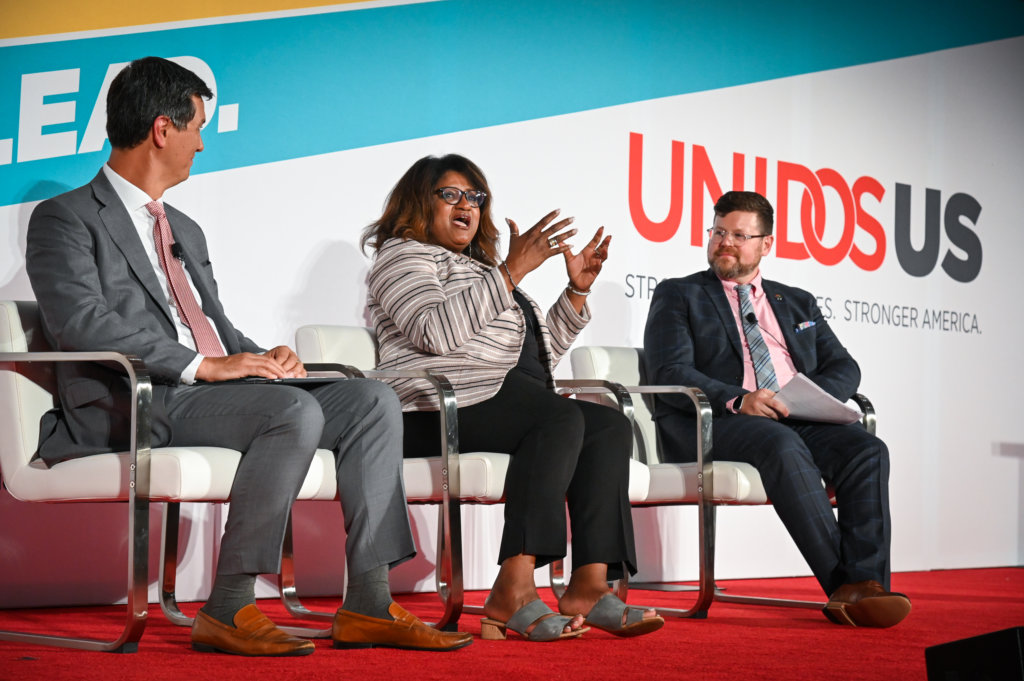
Intentional discrimination, however, is difficult to prove. For one, it requires there to be a confession. While it has happened before—Rice notes that in 1995, agents with American Family Insurance were caught on tape talking about signing up more White consumers for their products.
Rice noted that her organization recently partnered with the Center for Responsible Lending to test auto-loan practices for discrimination. What they found was that 62% of White testers were offered a better deal than Black or Latino testers, even though the Black or Latino testers were better qualified to receive the loan.
Testing gets to the heart of the second tool that advocates can use, which is disparate impact. Rice explained disparate impact this way: “If you have a policy that perpetuates discrimination or segregation, like the credit-scoring utility that manifests discrimination, you have to augment it so that you have a less discriminatory alternative.”
However, as Rice noted, the Trump administration has taken steps to dismantle disparate impact. That’s why the National Fair Housing Alliance launched their page DefendCivilRights.org, which aims to gather 100,000 signatures to send to the Department of Housing and Urban Development, with an eye towards a possible lawsuit in the future.
As an advocate, you can also get involved with organizations part of UnidosUS Homeownership Network, a program advising families in the home-buying process; helps them with their current mortgage; and provides financial, budgeting, and money-management advice.
Our perspective
UnidosUS and our Affiliates have been advocating on these issues for years. Earlier this year we released a report titled 10 Years After the Great Recession: A Story of Economic Loss and Resiliency for Latinos. The report finds that the effects of the economic recession that officially ended in 2009 linger today, particularly for Latinos.
More recently, we partnered with the University of North Carolina Center for Community Capital this year to conduct 25 in-depth interviews with Latino renter households in seven cities. The result is the report Calling It Home: Latino Rental Housing Affordability, which we discuss in a future post.
The report, released at a forum in Phoenix with UnidosUS Affiliate Chicanos Por La Causa, focuses on the experiences of low- and moderate-income Latinos in the rental market. With few exceptions, the Latino renters interviewed for the report were dissatisfied with renting viewing rental payments as “throwing money away.”
New homeowners face lack of inventory
Another difficulty that new homeowners are facing is inventory, according to Danny Gardner, senior vice president of single-family lending at Freddie Mac. He argued that as the economy has begun to improve, the demand for new homes has risen.
While mortgage rates have been declining since the beginning of the year, there is a deficit in the market of seven million homes. Additionally, there is a skill and labor shortage that is slowing down construction of new homes to close the gap.
This would be an opportunity for foreign workers to fill, however, there have been difficulties in addressing that shortage. “Immigration policy is frustrating the ability to bring foreign labor into the market,” explained Gardner.
Skill and labor shortages aren’t the only challenges frustrating our ability to produce new homes. “We have tariff wars that are putting pressure on materials,” Gardner added, referencing President Trump’s repeated jabs at countries like China that produce materials that are used to build homes.
Falling mortgage rates
After the Great Recession, financial institutions were upended. Since then, mortgage rates have fallen, and have just fallen again.
“If you’re sitting in a home with a 3% interest rate, it’s pretty hard to rationalize selling that home and potentially facing higher financing costs,” Gardner told the audience.
He also added that people are living longer and are capable of living on their own for longer than ever before. This means that Boomers, who are approaching their golden years, are able to continue living in their own homes.
Gardner recalled that of his neighborhood of 170 homes, approximately one-third of them are occupied by two people. Although that’s just one neighborhood, the data supports Gardner’s observation—about 1.7 million homes are not available today because this generation is not vacating their homes in the same manner as generations past.
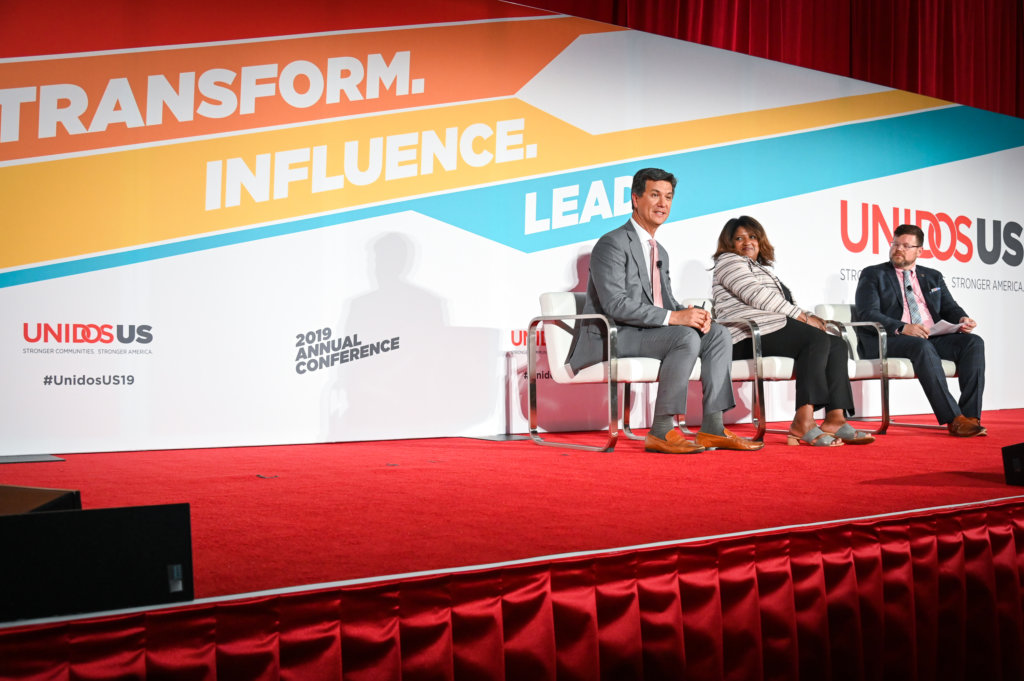
Homes have also become much more valuable. Recently, homes have increased in value by 5-7%, but wages have only increased by 2-3%. This makes it difficult for a homeowner to justify selling their home and taking their chances on the market if they don’t have to.
Latinos as Homeowners
However, despite these challenges, Gardner remains optimistic for Latinos’ prospects as future homeowners. “The Hispanic population is the only demographic population that has improved their homeownership situation over the past four years,” he told attendees at the plenary session.
In fact, Gardner added, “Between now and 2025, over 80% of new homeowners will be of diverse background and over half of that population are anticipated to be Hispanic.”
Gardner also detailed several tools that could be useful to aspiring homeowners. There’s Choice Renovation, which allows a homeowner to finance the renovation of a home as part of the purchase price or refinancing; Green Choice, which provides financial incentives for energy efficiency; and Sweat Equity, which credits a qualified person who has made repairs to their home with making those repairs.
One thing that remains clear, Gardner added, is that Latinos are leading the growth for homeownership.
To watch more of the conversation, visit our YouTube channel.
